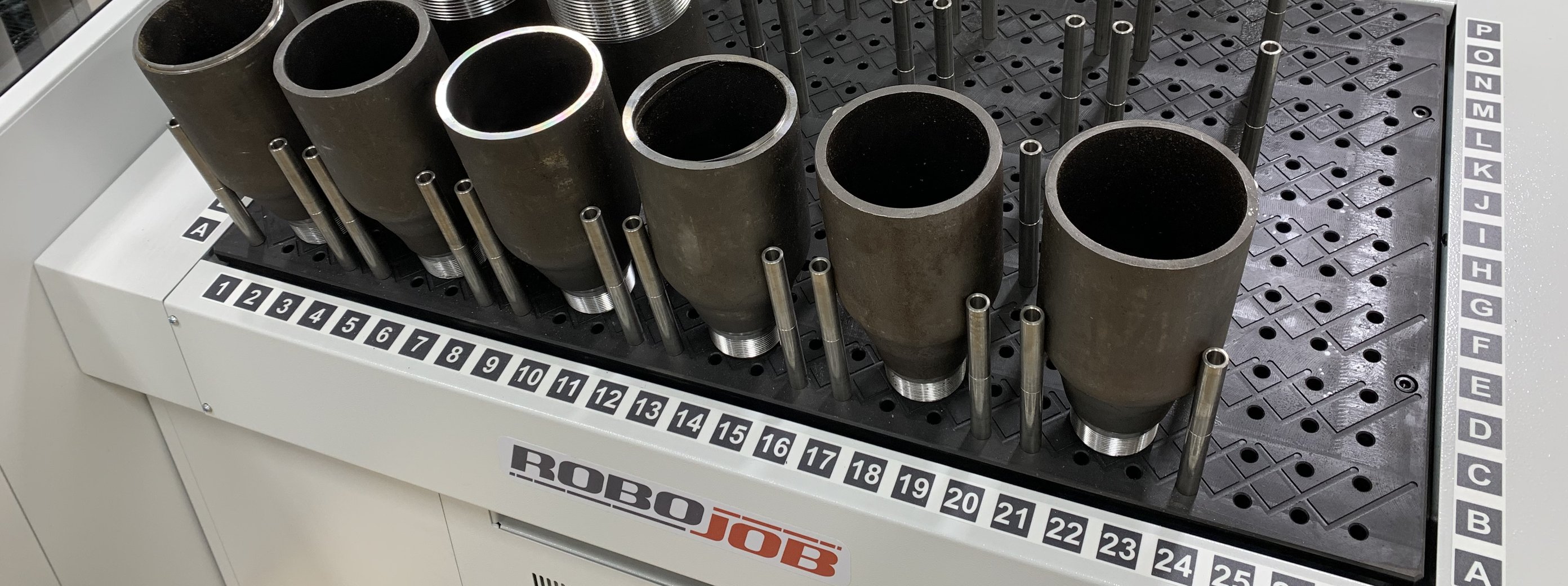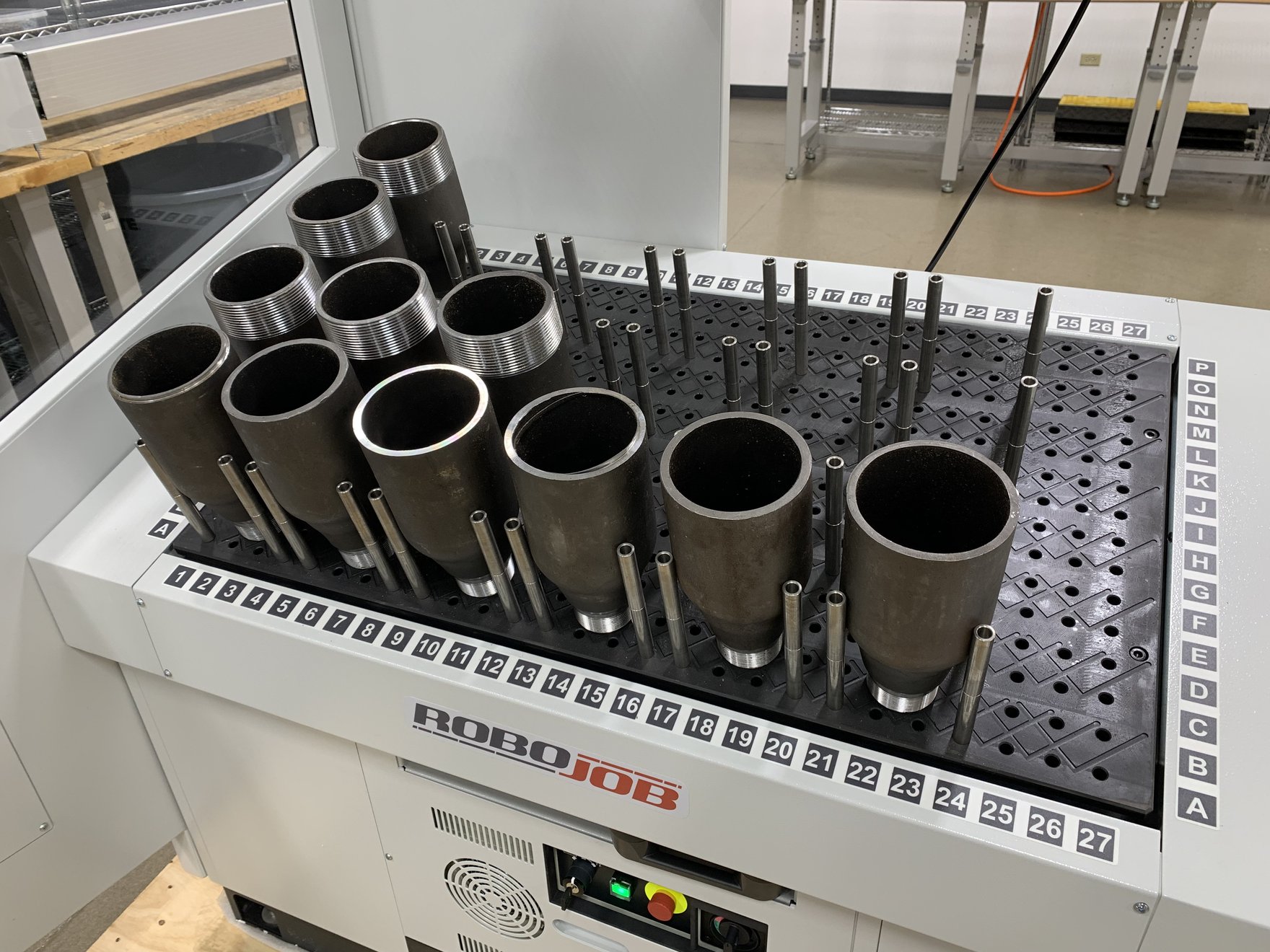
Reasons for Adding Robots Are Changing
Reasons for Adding Robots Are Changing
Read Time: 3 minutes
Word Count:780
Key Takeaway: Machine shops that bought a robot to mitigate labor challenges during the pandemic are coming back and buying more robots because they realize robots give them control over production and costs.
Machine shop leaders continue adding CNC-automating robots at a rapid rate. As the acceptance rate increases, the velocity of adding robots also increases. The reasons driving the change seem to be changing.
During the pandemic, adding a robot made sense because it mitigated labor shortages and subsequent disruptions. During the pandemic, health precautions were a high priority. Barriers between workstations were added to help protect employee health.
Any function where you could operate with lower employee density was good thing. Adding the robot allowed you to run your machine shop with fewer employees, which was seen as a safety advantage.
Operating during the pandemic also pointed out another advantage of robots. At the beginning of the pandemic, if you tested positive for COVID-19, you were quarantined for 10 days. That meant you couldn’t come to the plant.
Manufacturers scrambled to reallocate workers to cover as many assignments as possible. The results were often less than optimal, and customers were disappointed.
With variable worker attendance, production gaps became more common. Parts deliveries were delayed, and supply chain issues exacerbated things. If you can’t deliver parts, you can’t invoice them—that delayed cash flow.
The robot was not a custom-made solution to the problem, but it appeared that way.
Machine shops started adding robots to mitigate the problem of a highly variable workforce. The robot didn’t get COVID, and it didn’t spread COVID. More importantly, the robot was highly dependable because it was there daily. It worked no matter what.
If someone in the work cell tested positive, the robot might have been wiped down but wasn’t required to quarantine for ten days. CNC machine tending robots helped machine shops get back to an even keel in terms of production.
Today, machine shop leaders are adding robots because they've realized that having the robot in place gives them a level of control over production and costs that is unavailable any other way.
Being able to respond quickly to customer requests proved to be a huge advantage. Especially in a time when other machine shops struggled with production.
Recently, we have talked with machine shop leaders who looked back at their pandemic-driven robot purchase and are now adding more robots.
Some have even commented that they bought the first robot to mitigate the labor shortage. They needed to produce parts, and there was no consistent way to get it done.
After the pandemic eased, the “Great Resignation” wave rippled across industries. People quit, and with so many people out of the labor pool, finding and keeping people is difficult. When you could find and keep them, inflationary wage pressures changed machine shop math.
That is when machine shop leaders began to look at robots in a different light.
One machine shop leader commented, "We bought the first robot to handle work during the pandemic. As time wore on, I realized the level of control over my production parameters is so much better that it would be foolish not to add more robots."
Control over production and costs is critical to machine shop success. You may not be able to control supply chain issues and can’t control raw materials' prices. But that doesn't mean it is time to throw up your hands in disgust and give up.
Because you can't control everything, controlling the things that you can control becomes paramount.
A CNC machine-tending robot gives you consistent control over production times. Because you can plan production without being impacted by as many worker absences, you can be more confident in keeping delivery promises. That certainly matters to your customers.

Controlling the robot is effortless
Because this robot was born out on the shop floor fifteen years ago, it is a mature product. You aren’t getting frequent updates and tweaks to the software.
We’ve had a decade to take the complexity of robots and make operations extremely simple. You can see the result in our Windows-based, icon-driven, drag-and-drop software.
It is so simple that while demonstrating the software to a potential customer, she told me, "This isn’t programming. This is just giving the robot operating instructions like a human operator.”
Spend five minutes entering the raw and finished parts dimensions, the material, the piece count, and the optimal air blowout pattern.
Load the table with raw parts, press the green button, and walk away.
It isn't any more complicated than that!
While the reasons for adding CNC machine-tending robots have moved on from pandemic protection, the benefits of adding the robots are still control over production and costs.
To discover how our purpose-built, CNC machine-tending robots can help your machine shop, call us at 866-952-9020 and press 1 to start the conversation.